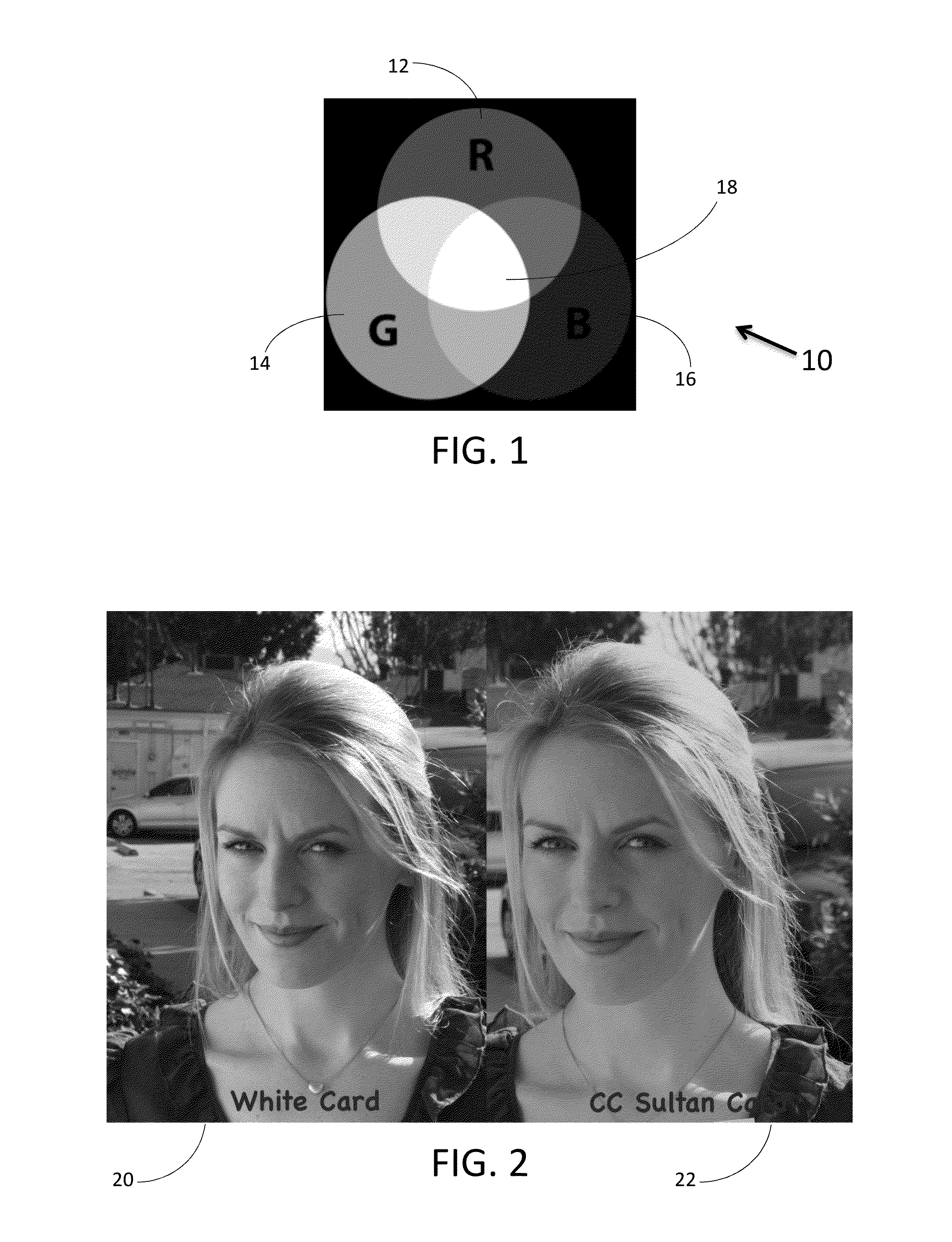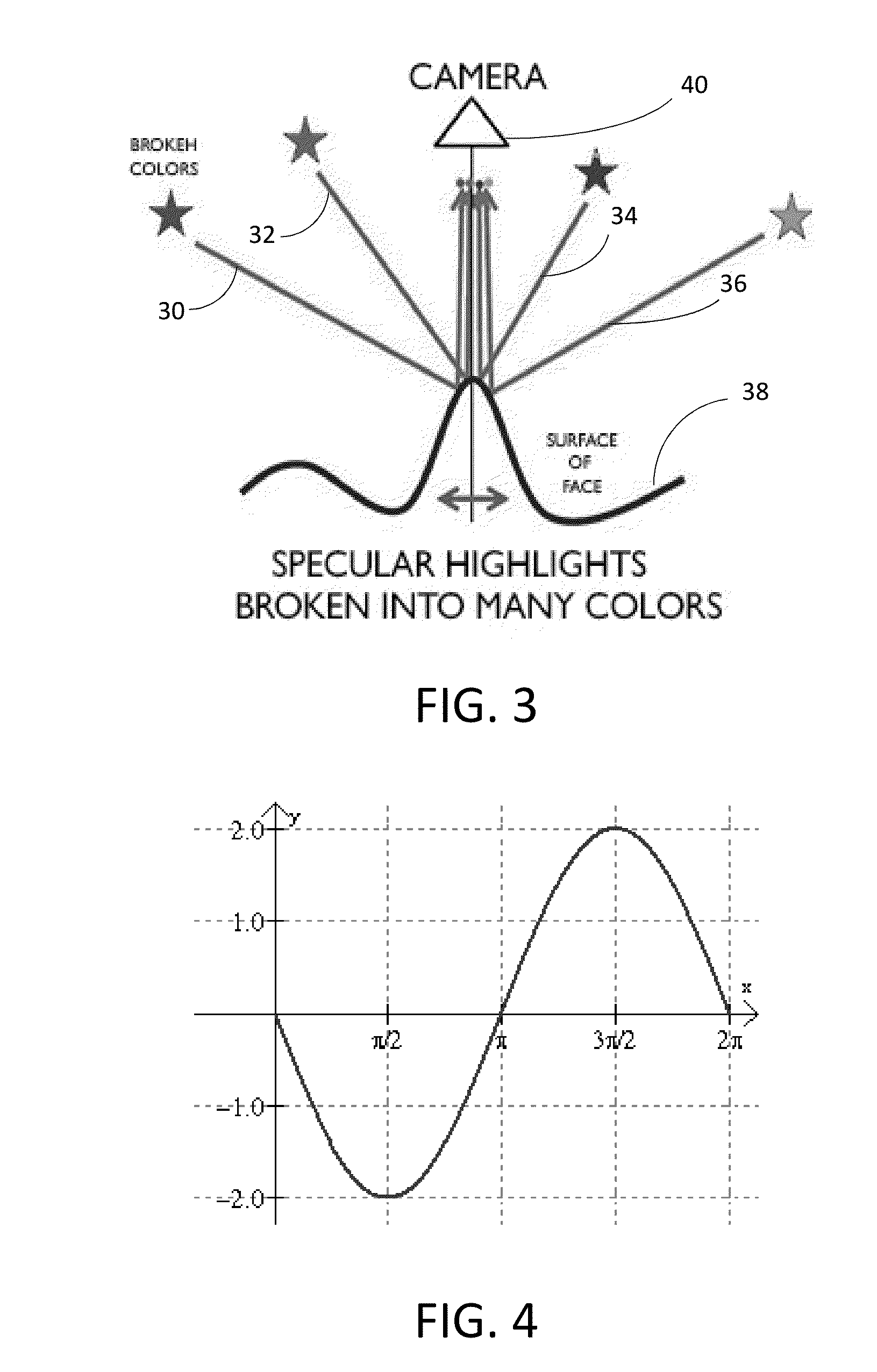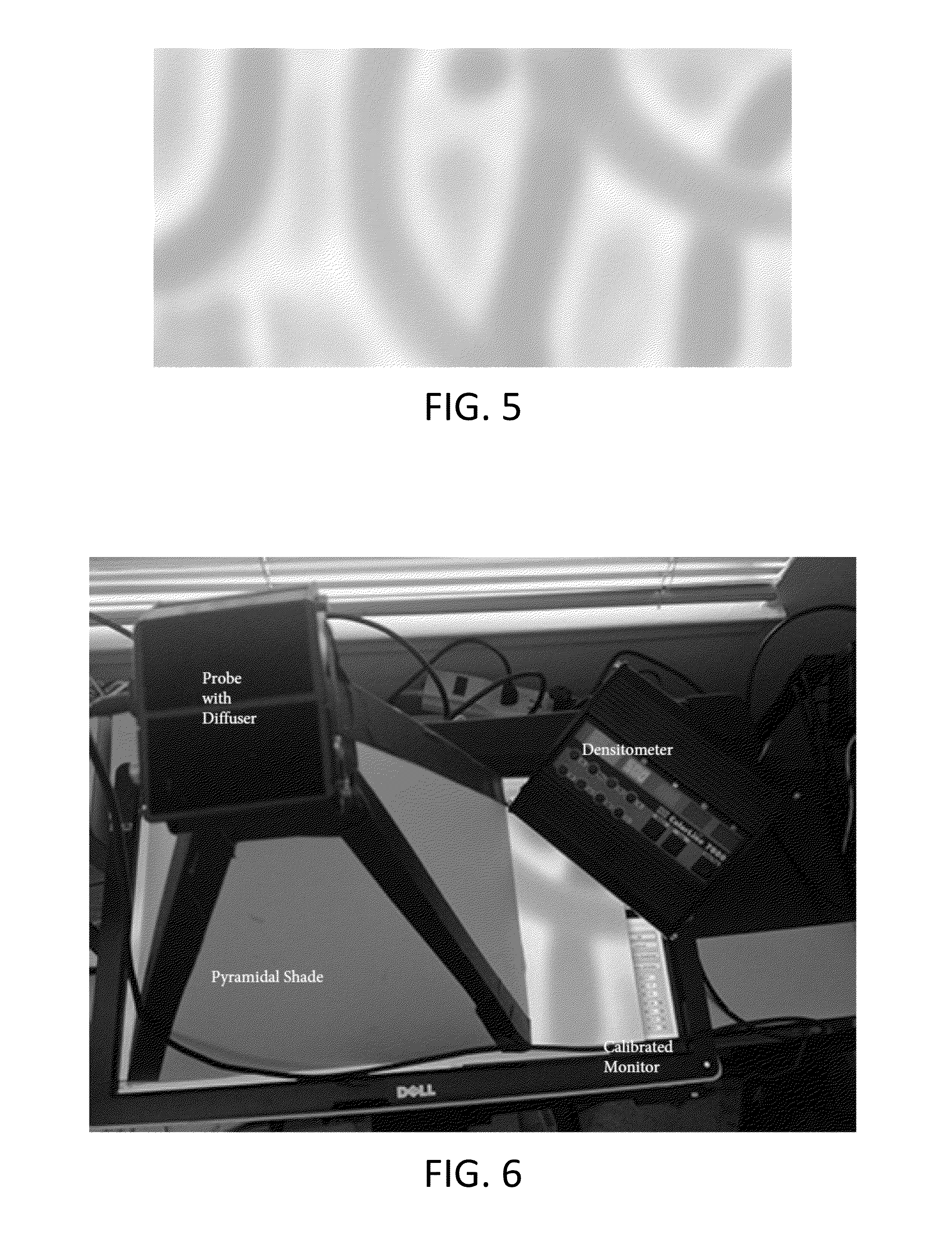Environmental lighting system and method
a lighting system and environment technology, applied in the field of lighting systems, can solve the problems of not being able to have anything other than a uniform white soft source of lighting for the last 30 years, using filters still offering only uniform illumination sources, and digital photography is notoriously unforgiving, so as to achieve softening the imperfections of the subject's face, softening flaws, and natural rendering
- Summary
- Abstract
- Description
- Claims
- Application Information
AI Technical Summary
Benefits of technology
Problems solved by technology
Method used
Image
Examples
example 1
[0052]The standard photographic color correction filters are used on lights and lenses to correct different lighting conditions (different color temperatures in degrees kelvin). (This is a useful color because it is well known by professional photographers and cinematographers.) By using complimentary colors of the color correction filter colors on Bokeh patterns you will end up with an additive mix that will give you white light. (Note that complementary colors of color correction filters are not the same as simply using combinations of color correction filters to cancel each other out. A sunlight to tungsten filter (−2300° k) will not be the same as a tungsten to daylight filter (+2300) because they are balancing the light to create a full spectrum for a given color temperature.) The Bokeh colors are mixed using a densitometer to create white light or an intended specific colorcast. These complementary colors are identified in TABLE 1 below and shown in the illustrative example of...
PUM
 Login to View More
Login to View More Abstract
Description
Claims
Application Information
 Login to View More
Login to View More - R&D
- Intellectual Property
- Life Sciences
- Materials
- Tech Scout
- Unparalleled Data Quality
- Higher Quality Content
- 60% Fewer Hallucinations
Browse by: Latest US Patents, China's latest patents, Technical Efficacy Thesaurus, Application Domain, Technology Topic, Popular Technical Reports.
© 2025 PatSnap. All rights reserved.Legal|Privacy policy|Modern Slavery Act Transparency Statement|Sitemap|About US| Contact US: help@patsnap.com



